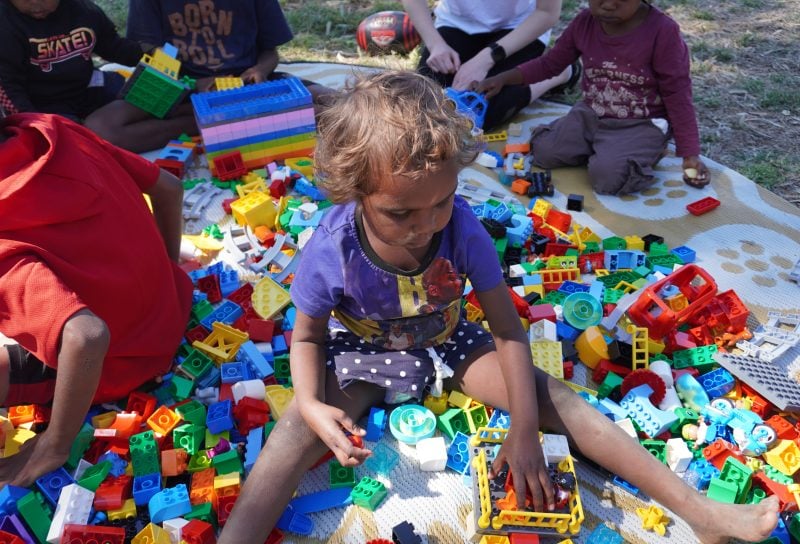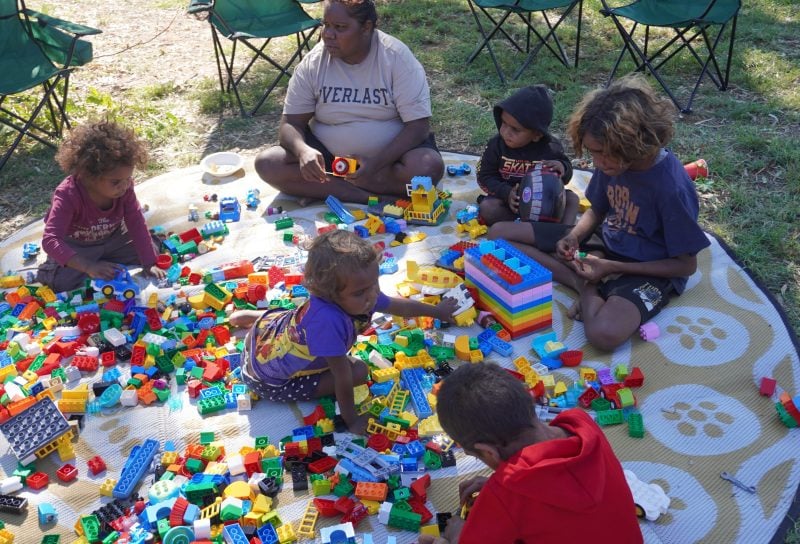What is National Aboriginal and Torres Strait Islander Children’s Day?
National Aboriginal and Torres Strait Islander Children’s Day is our national day dedicated to celebrating our children and has been held every year on the 4 August since 1988.
National Children’s Day gives all Australians the opportunity to show their support for Aboriginal and Torres Strait Islander children and learn about the impact that culture, family and community play in the life of every Aboriginal and Torres Strait Islander child.
Children’s Day is an initiative of SNAICC – National Voice for our Children and we organise a national launch event annually for Children’s Day to be held at a different location each year. These events also see the wider community take the lead in celebrating Children’s Day with amazing and diverse celebrations across the country. SNAICC produces and distributes resources to help local communities and organisations around the country celebrate the day, including 15,000 Children’s Day bags and other resources to support more than 500 community events across Australia.
The 2024 Aboriginal and Torres Strait Islander Children’s Day theme Strong in Culture, Stronger Together elevates the intention of Children’s Day, focusing on the strength of our children that comes from their connection to culture and mob.
Find out how to celebrate Children’s Day
Why is Children's Day important?
Children’s Day is important as a national celebration for our children to give them confidence and advocate for systemic changes to be made.
The majority of Aboriginal and Torres Strait Islander children are thriving and growing up strong in their cultures with support from family and community. However, there is a significant number of children that continue to face ongoing challenges that stem from colonisation and its effects. This includes discrimination, poverty, systemic removal, intergenerational trauma, dislocation from land and culture and community disempowerment.
To achieve equality, we must approach these challenges through a holistic approach that considers Aboriginal and Torres Strait Islander children’s wellbeing, safety and development.
This is why we celebrate National Aboriginal and Torres Strait Islander Children’s Day.
History of Children’s Day
On 4 August 1988, the first National Aboriginal and Islander Children’s Day was established, amid protests led by Aboriginal and Torres Strait Islander people and their supporters during the bicentennial year.
Aboriginal and Torres Strait Islander peoples felt that a day was needed to celebrate our children, to instill confidence in them and to make them feel special and included. The date 4 August was chosen as the day to celebrate as it has historically been used to communally celebrate the birthdays of Aboriginal and Torres Strait Islander children who were taken from their families at a young age, without knowing their birthday – the Stolen Generations.
Since its establishment, Children’s Day has become a major event in the lives of Aboriginal and Torres Strait Islander children, families and community organisations. Every year, the wider Australian community has taken the lead in celebrating Children’s Day, with amazing and diverse celebrations across the country. Cultural events, open days, arts and crafts, storytelling, face painting, concerts, morning teas and community barbeques are all held to celebrate the occasion.
Children’s Day themes through the years:
- 2023: Little Voices, Loud Futures
- 2022: My Dreaming, My Future
- 2021: Proud in Culture, Strong in Spirit
- 2020: We are the Elders of Tomorrow, Hear Our Voice
- 2019: We Play, We Learn, We Belong
- 2018: SNAICC – Celebrating Our Children For 30 Years
- 2017: Value Our Rights, Respect Our Culture, Bring Us Home
- 2016: We All Belong
- 2015: Little People, Big Futures
- 2014: Kids in Culture – Strong, Proud Resilient
- 2013: Right Here, Right Now. Our Rights Matter
- 2012: Our Children, Our Culture, Our Way
- 2011: From Small to Big: Growing Stronger Every Day
- 2010: Value My Culture, Value Me
- 2009: Good Child Protection: We Do It Better Together
- 2008: Nurturing Our Children to Flourish
- 2007: Raise Children Strong in Culture – Pathways to Healing and Revival
- 2006: My Culture Is Me – I Am Proud and Strong
- 2005: Foster and Kinship Carers – Keeping Kids Connected to Community, Family and Culture
- 2004: One Childhood – One Chance – Let’s Not Take a Chance on Our Future – Invest in Our Future Leaders
- 2003: Break The Silence – Protect the Kids – Heal the Perpetrators
- 2002: Tracks In the Sand – A Path to Self-Determination
- 2001: We Are Watching and Learning from You – Make Us Proud of What You Do
- 2000: Celebrating Our Children’s Future – Cultural Inheritance, The Right of Every Indigenous Child in Australia
- 1999: Elders and Children: The Circle of Life – Sharing Culture, Knowledge and Wisdom
- 1998: Heart For Our Community: Teach, Love and Learn Our Children
- 1997: Bring Them Home
- 1996: Unity Is Our Future
- 1995: Never Again. Break The Chains
- 1994: Children, Our Dreaming – Keep Our Families Together
- 1993: Their Future, Our Responsibility
- 1992: My Family, Where Are You?
- 1991: The Stolen Generation – Where Are They Now?
- 1990: We Don’t Make the Problems – Why Must We Pay?
- 1989: Our Children, Our Future – Let’s Protect and Education Them
- 1988: Return Our Kids in 1988 – Stop the Cultural Genocide
Join Us
Be part of our advocacy efforts and stay informed about our initiatives.
Become a member today and add your voice to the cause.

